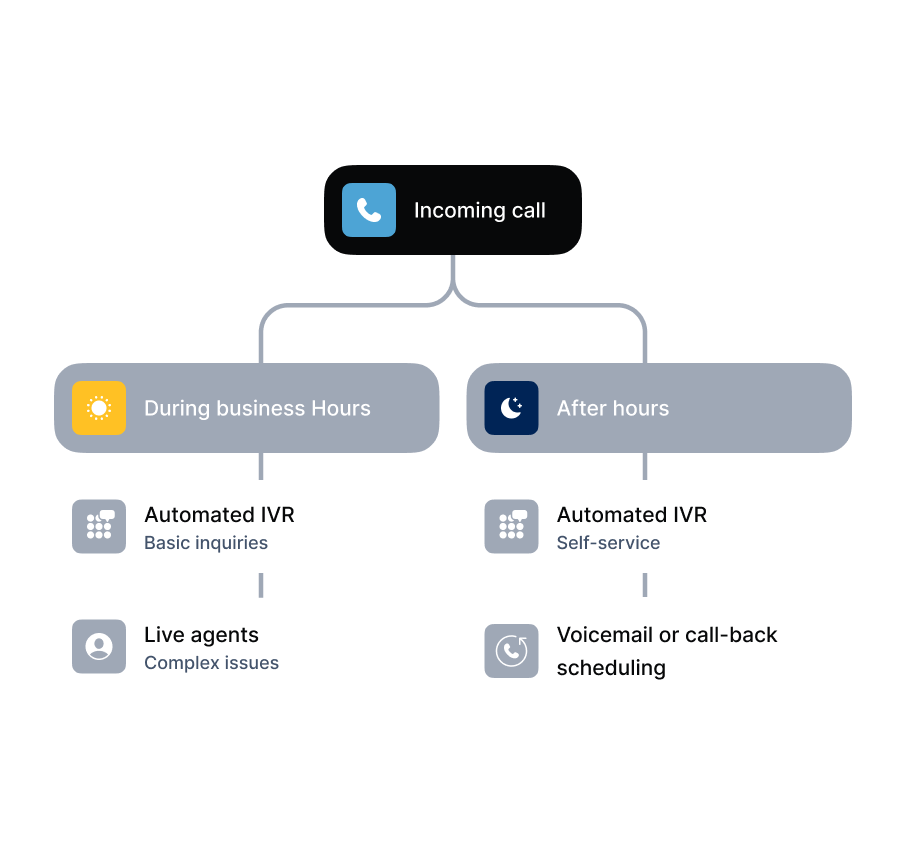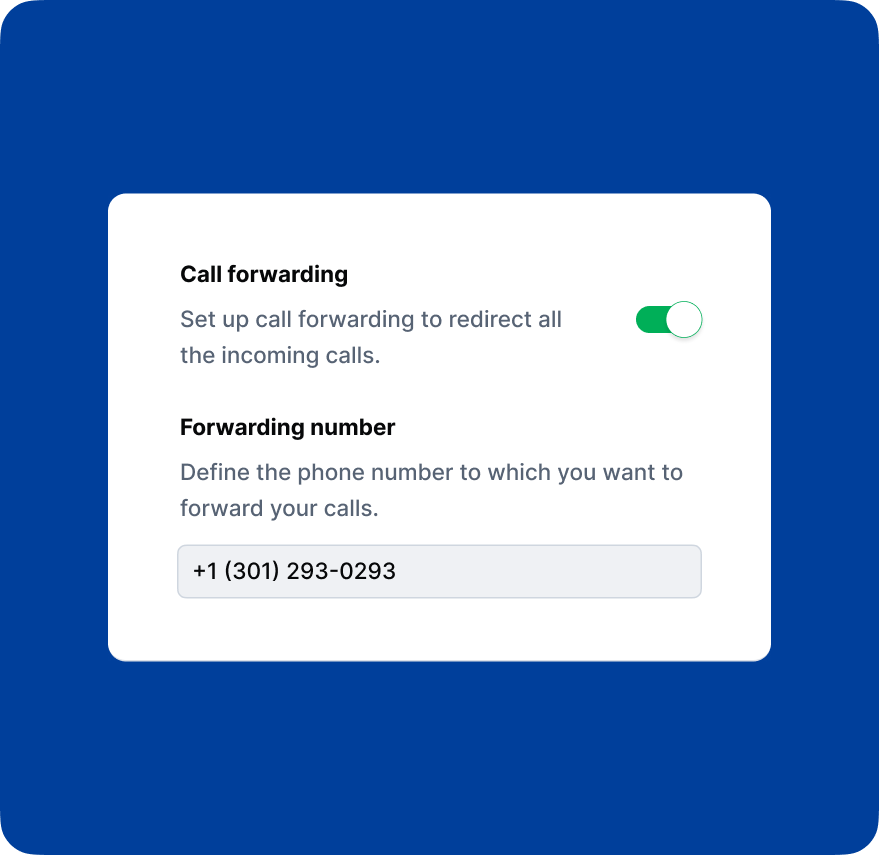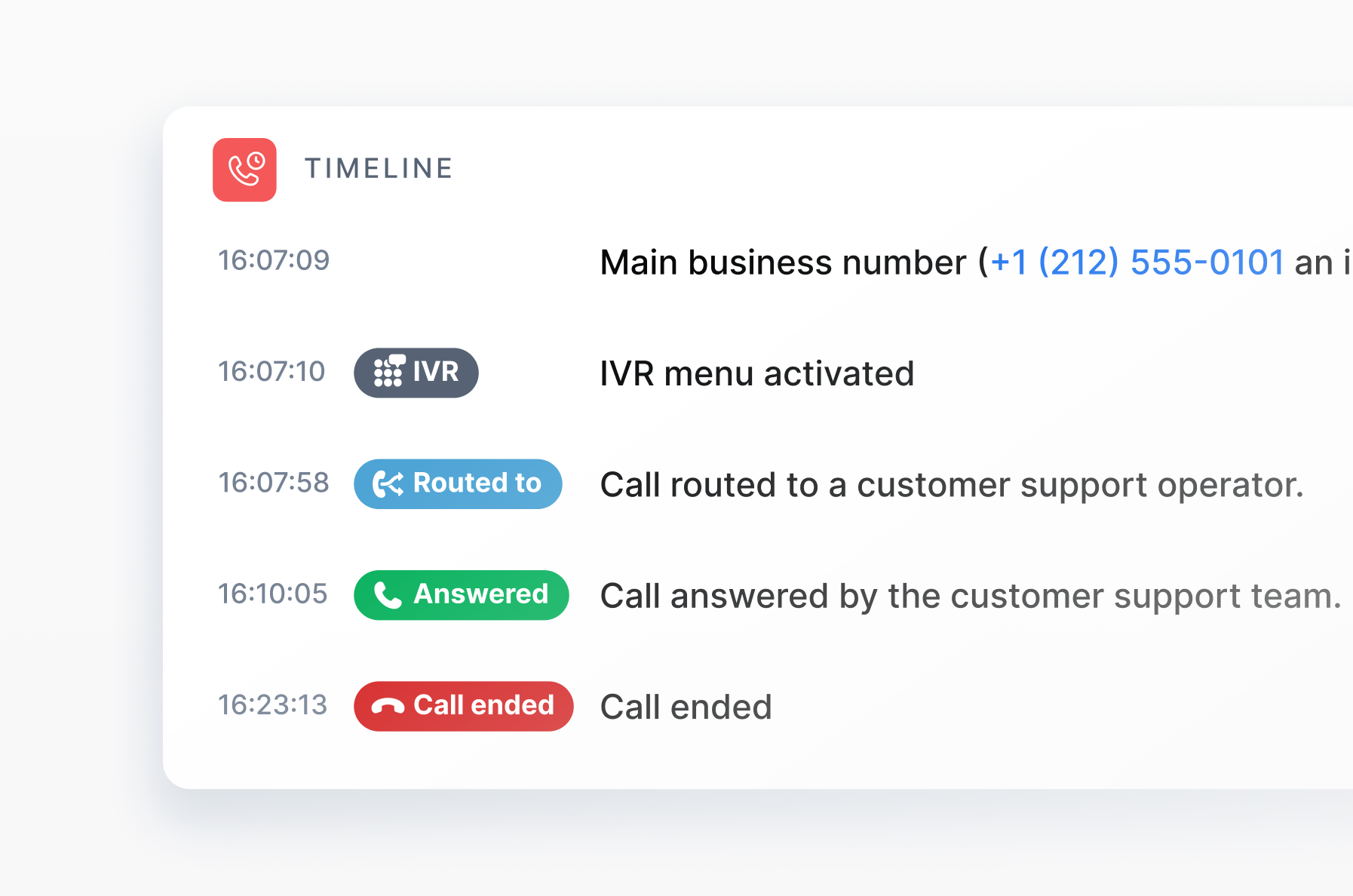Blog
Cloud Phone System
Understanding Call Management: How It Works and Why It Matters

Understanding Call Management: How It Works and Why It Matters
Learn what call management is, discover its key components, and find out whether your business needs one.
Do you remember calling a company only to be left on hold or passed from one person to another without getting a clear answer? We’ve all had that frustrating experience more than once. On the other hand, when you reach a business where your call is handled smoothly and your issue is resolved quickly, it feels almost magical.
It might feel that way, but in reality, it’s called effective call management.
In this blog, we’ll explain what call management is, explore its key components, and help you determine whether your business needs it.
What Is Call Management?
Call management refers to the set of processes and systems used to organize and handle incoming and outgoing calls within an organization. At its core, call management ensures that every call is answered promptly, directed to the appropriate person or department, and handled with professionalism. This systematic approach transforms what could be chaotic phone traffic into a streamlined flow of calls that enhances customer satisfaction and employee productivity.
Effective call management goes beyond simply answering phones. It encompasses various practices, including call routing, queue management, call forwarding, voicemail handling, and detailed call tracking.
What is a Call Management System?
A call management system is a technology solution, typically integrated within business phone systems, that automates and optimizes the handling of voice communications. These systems leverage advanced software and telephony infrastructure to route calls, manage call queues, track call metrics, and provide features that would be impossible to achieve with traditional phone lines alone. Think of it as the brain behind your business phone operations, making split-second decisions about how to handle each incoming call based on predefined rules and real-time conditions.
How Does a Call Management System Work?
Because call management involves multiple moving parts, both processes and tools, the exact setup can vary from one business to another. Still, let’s look at a typical example of how call management works for incoming calls.
The process starts the moment a call comes in, triggering a series of automated actions that happen within seconds. When someone dials your business phone number, the call management system in your business phone system immediately captures key details such as the caller’s phone number, time of the call, and which line or number they dialed.
Next, the caller usually encounters the first line of call handling, often an auto- or virtual receptionist. The receptionist greets the caller and routes the call based on your business schedule and predefined rules. Depending on your setup, calls can be directed straight to a user, sent to voicemail, or distributed among multiple team members simultaneously through ring groups.

For more complex setups, the next step may involve an IVR (Interactive Voice Response) menu. This is where callers hear and select options like “Press 1 for Sales, Press 2 for Support.” Based on the selection, the system applies routing rules to deliver the call to the right destination. If all agents are busy, the call can be placed in a virtual line called a “call queue”, where callers wait with hold music or announcements. Many systems even provide estimated wait times and an automatic callback option, helping reduce customer frustration.

At the user level, call management systems give employees a range of tools to handle calls smoothly with customers and teammates. Users can manage multiple calls in parallel, switching between them easily without losing context. For example, by placing one call on hold while answering another. They can place callers on hold with custom messages or music, helping to keep callers informed during short wait times.
The system also allows users to transfer calls to another team member or department, either with context, where the next agent receives a summary of the ongoing conversation, or without it for quick handoffs. In addition, employees can host conference calls, adding multiple participants into a single live conversation to collaborate, troubleshoot, or make faster decisions.

Another important feature is conditional call forwarding, which automatically redirects calls based on specific conditions such as time of day or user availability. For example, calls can be forwarded to another number after business hours or to a colleague when someone is on another call.

Behind the scenes, the system continuously tracks every interaction, creating a complete call timeline. This includes every step the call goes through, from the initial ring to final resolution, providing valuable data for reporting, performance analysis, and further improvement.

This is just one example of how a call management system can operate. The exact flow depends on your business’s communication strategy and the capabilities of your business phone system provider.
AI in Call Management
Artificial intelligence has become invaluable in areas where automation is necessary, and call management is no exception. While call management systems have already automated many tasks that once required human receptionists, AI has taken it to the next level by adding advanced natural language processing and machine learning to automate phone conversations while keeping human-like understanding and responsiveness. What began as simple voice capabilities for IVR menus that could speak and recognize basic caller responses has evolved into something far more sophisticated. Today's AI voice agents represent a more independent form of this technology, capable of engaging in natural conversations with callers without relying on rigid menu structures.
These intelligent systems can handle a remarkable range of tasks autonomously. AI voice agents excel at answering frequently asked questions, processing simple transactions like appointment scheduling or order status checks, and taking detailed messages for human follow-up. What makes them particularly powerful is their flexibility in training and integration. Businesses can train AI voice agents on their specific knowledge base, including guides, policies, product specifications, pricing information, and FAQs. They can also be trained on website content or custom text blocks tailored to your business needs. Beyond knowledge training, AI voice agents can connect directly to your business tools such as CRM systems, online stores, and calendars, allowing them to retrieve real-time data.
While AI voice agents can handle most routine inquiries, there are times when a caller still needs to speak with a human. In such cases, the AI seamlessly transfers the call to an available agent, passing along the full context of the interaction. This ensures the agent receives a complete summary of the caller’s needs and details of the conversation so far.
AI_VOICE_AGENTS
How Does Call Management Help Businesses?
A well-designed call management system brings measurable improvements to how businesses communicate with customers and collaborate internally. Here’s how it helps:
- Reduced lost or abandoned calls: With smart routing features such as auto attendants, IVR menus, and call queues, businesses can ensure that every call is properly directed and acknowledged. This prevents callers from hanging up due to long wait times or confusion, reducing missed opportunities and lost leads.
- Better customer satisfaction: Call management systems make every interaction smoother and more efficient. Customers reach the right person faster, receive consistent information, and spend less time waiting on hold, all of which leads to higher satisfaction and stronger relationships.
- Minimized wait times: Automated routing rules and intelligent call distribution ensure that calls are always directed to the most available or best-suited team member. This shortens wait times and helps customers get answers quickly without being bounced between departments.
- Improved internal processes: Organized call flows help teams collaborate more effectively. Managers gain visibility into performance metrics such as call volume, response time, and missed calls, while employees benefit from clearer workflows and shared access to call histories and notes.
- Keeping costs down: A call management system helps reduce staffing and time-related expenses in two key ways. First, there’s no need to hire a dedicated receptionist, as automated tools can greet callers and route them efficiently. Second, agents no longer waste time handling irrelevant calls or repeatedly transferring callers between departments, reducing inefficiencies and lowering overall communication costs for the business.
Does Your Business Need a Call Management System?
It’s not always easy to recognize when it’s time to adopt a call management system, especially for startups and small businesses that may have gotten used to a somewhat chaotic way of handling calls. But if managing phone communication feels more like a challenge than a routine task, it may be time to make a change.
Ask yourself the following questions:
- Do you struggle to handle your existing call volume?
- Do clients or team members often complain about misrouted calls?
- Are you losing potential clients because they can’t reach you?
- Is your team overwhelmed by the workload of managing calls?
If you answered “yes” to any of these questions, it’s likely time to consider a call management system that can bring structure, consistency, and efficiency to your business communication.
Conclusion: Easily Manage Calls with DialLink
A well-structured call management system can take a huge load off your business. Once in place, it keeps communication organized and ensures smooth call flows, helping you reduce missed calls, minimize wait times, improve customer satisfaction, and lower overall communication costs.
While having a strong call management strategy is essential, it’s equally important to have reliable technology behind it. DialLink’s business phone system provides all the tools you need to build an effective call management process, including an auto attendant, IVR menus, call queues, call transfers, and built-in AI voice agents.
And while the term “call management system” might sound complex, DialLink makes it simple. Every feature is easy to configure with intuitive settings, so you can set up your first working call management flow in less than an hour.
On-call management is the process of organizing how incoming calls are handled during specific times, often outside regular business hours, when urgent issues may arise. It involves assigning designated team members to take responsibility for answering calls during their scheduled shifts. On-call coverage is especially critical for IT, development, support, and operations teams that maintain services requiring 24/7 availability. This can be managed using tools like an auto attendant that routes after-hours calls to a ring group with assigned on-call operators.
A call management system typically includes tools such as auto attendants, IVR menus, call routing, call queues, call transfers, voicemail management, and call forwarding. Modern systems often go a step further with AI voice agents that can answer questions and automatically route calls.
Yes. Most modern business phone systems, including DialLink, offer mobile apps that let you access all key call management features directly from your smartphone. You can answer and manage multiple calls, place callers on hold, transfer calls between team members, and even adjust routing or forwarding rules, all while using your business phone number and keeping your personal number private.
Share this post

Arina Khoziainova
Content Writer at DialLink
Arina is a content writer with over 7 years of experience in the IT industry. At DialLink, she creates clear, insightful content that helps small business and startup owners simplify communication and drive growth using modern tools. With a strong focus on practical value, Arina transforms complex topics into accessible, actionable stories.
Keep Reading

Google Voice Auto Attendant: What It Is and How It Works
Explore how Google Voice auto attendant works and whether it’s right for your small business.
December 22, 2025
9 minutes

Understanding Inbound Calls and How to Handle Them
Learn what inbound calls are, why they matter, and how to handle them efficiently.
November 27, 2025
11 minutes

Warm Transfer: What It Means and When to Use It
Learn what a warm transfer is, how it works, how it differs from a cold transfer.
November 26, 2025
8 minutes

Cold Transfer Explained: When to Use and When to Avoid It
Read what cold transfer is, how it differs from a warm transfer, and when it should be used.
November 25, 2025
9 minutes